
chubbs
-
Posts
3,894 -
Joined
-
Last visited
Content Type
Profiles
Blogs
Forums
American Weather
Media Demo
Store
Gallery
Posts posted by chubbs
-
-
-
1 hour ago, ChescoWx said:
As clearly shown below the trend away from the PHL heat island airport for 90 degrees is clearly falling over the last 10 years - the disparity when compared to PHL continues to grow. The suburban locales averaging high single digit amount of 90+ days while PHL now heating up into an average of low 30's per summer. This is all over no more than a 30 nautical mile distance from the airport.
Nice job of cherry-picking. Pottstown has a bad sensor and kqms is a site with a relatively low # of 90F days. Per chart below the other regional airports all trend with Philadelphia. I have excluded 2022 because of the bad sensor at Philadelphia.
You have also ignored my comment about the inconsistency in your dataset. Other sites in Chesco had the following # of 90F days last year: Phoenixville 33, Glenmoore (very close to East Nantmeal) 18, West Chester airport 19. These are in-line with the data from Coatesville posted above. East Nantmeal only had 1 90F day last year, an outlier to the other Chesco sites, and poor choice to combine with older Chesco data to determine climate trends.
-
10 hours ago, ChescoWx said:
I have made no adjustments to any analysis ever. I am a believer in climate change (it is real and constant throughout history and will continue forever) but believe this change is cyclical and not unusual. The 3 stations have been analyzed and deemed valid for analysis based on the following detailed reviews. The data set comprises only the National Weather Service COOP observations from 1888 to 1982 for Coatesville 1SW when that station moved per NWS direction to a nearby location in Coatesville beginning in 1983. That location was only 2 miles to the NW at an additional 300 ft elevation change - that station remained in use till 12/31/07. The data of both of those stations was deemed acceptable and combined by the Pennsylvania State Climate Office and is posted on their website with climatology stats using the combined 2 stations. So now we have data from 1888 through 2007 that is included in this data set.
However, the Coatesville NWS observer stopped reporting in December 2007. Without that data I was required to do a statistical analysis to determine if the daily data that had been recorded at both the Coatesville NWS observer station and my NWS spotter data in East Nantmeal for Chester County (at the same elevation ~660 ft ASL) which were taken concurrently daily from 12/1/2003 through 12/31/2007 would be found statistically the same - this is critical because if this statistical significance test had failed we would not have been able to use this data for the ongoing analysis I perform. However, based on the detailed statistical analysis performed we were able to show that both data sets are statistically one and the same based on the highly significant ( p-value results were well under 0.05 required). This detailed statistical analysis provided the support that allows us to have high confidence that the total data set being used is valid and appropriate for analysis.
Sorry for the long winded explanation (more than most folks would want) but want to ensure why we are so confident in these raw Chester County data sets.
Thanks! Paul
Lets look under the hood at your dataset. Below is chart of 90F days at the three sites you are using. Plus a table comparing the three sites with Philadelphia (non-airport prior to 1940). 100+ years ago Coatesville 1SW was often the warmest site in the Philadelphia region, with more 90F days than Philadelphia. Coatesville 1SW had cooled by the 1970s, probably due to station modernization. The two Coatesville sites are similar. I am comfortable combining them but only after 1970, when the Coatesville 1SW bias adjustments are small and can be ignored. The chart I posted earlier showed that all the Coatesville sites (1SW, 2W and Coatesville airport after 2007) and Philadelphia airport have had very similar temperature trends since 1970.
East Nantmeal has many fewer 90F days than either of the Coatesville sites. On hot summer days East Nantmeal is often the coolest site in the Philly region. Your dataset has a relatively warm site at the beginning and a cool site at the end, relative to other regional stations. Not a good basis to estimate long-term regional climate trends or to evaluate the quality of nearby stations like the Philadelphia airport.
Phila Chescowx 1894-1930 17 23 1970-81 22 13 1982-2003 29 16 2004-22 30 5 -
 1
1
-
-
17 minutes ago, ChescoWx said:
Charlie you miss the point there is no slant or cherry picking data with my analysis....I have no incentive to skew anything I simply analyze the factual reporting of all available NWS COOP and spotter reports for a long period of time for Chester County PA. The fact is does not support the global warming hypothesis is not my problem. You never say my data is wrong....simply that it needs to be massaged. You can continue to post your adjusted pooled multi-station data for Southeast PA....and I will continue to report on what the trained observers and spotters report and report the facts both warm and cold for the available long term stations in my county.
Come on Paul, you have strong unorthodox views on climate change that skew your outlook and analysis. You complain about NOAA, but you are making huge adjustments in your own analysis. You are appending the records of three separate Chesco stations end-to-end-to-end to make a one longer record. Three stations with different elevation, latitude, sun exposure, equipment, etc. I've provided plenty of information on the dissimilarity of your stations. The data isn't wrong, but your analysis is. You have missed 3 to 5F of warming compared to other analyses.
-
 1
1
-
-
1 hour ago, ChescoWx said:
Chubbs/Charlie follows the NOAA view of adjusting for that pesky "excess cooling" with "proper adjustments" at those Chester County Stations from 1940-1970. My data (as noted with the disclaimer in my signature below) will continue to trust the multiple NWS COOP observers and am quite confident that they all did not have faulty equipment at the same time. Just no proof of that at all! So we must continue to only analyze the actual approved NWS data validated at the time it was submitted to the NWS office. Unfortunately, for Charilie it does not support the warming story as well without that critical "excess cooling" adjustments. I would also add that the fact I simply produce the actual raw data for all of these Chester County locations without adjustment does not allow me to have any so called "confirmation bias on my part" I can't adjust the numbers for any perceived pesky excess cooling or warming as that may introduce some analyst bias which I won't ever do.
Yes, I am going to stick with NOAA over an amateur who is motivated to get an answer that differs from expert opinion.
The link below describes one source of bias in the US Coop data.
https://judithcurry.com/2015/02/22/understanding-time-of-observation-bias/
-
 2
2
-
-
2 hours ago, ChescoWx said:
Per chart below comparing Philadelphia and Wilmington airports, Philadelphia airport had a bad sensor or some other measurement issue starting at the end of 2021 and lasting most of last year. It was corrected in Dec and is now running cooler. So yes the Philadelphia airport was roughly 1F too warm last year, but not due to "heat island contamination"
The difference between Chester County coop stations and the Philadelphia airport is mainly caused by excess cooling at several of the the coop stations between 1940 and 1970 as the stations were modernized (clearly seen in your chart). Below is the bias-adjusted data for Chester County from NOAA since 1940. When properly adjusted, the Chester County data shows considerable warming since 1940, in good agreement with the Philadelphia airport.
Finally you have biased the Coatesville Coop data by tacking on your own cooler house since 2004. The non-adjusted data from Coatesville by itself matches the airport very well as shown below. If you exclude 2022, with the bad airport sensor, warming since 1970 is 3.3F at Philadelphia and 3.5F at Coatesville.
What you attribute to "heat island contamination" is just poor analysis and confirmation bias on your part.
-
 1
1
-
-
1 hour ago, ChescoWx said:
Great info!! It looks like they reached their peak steel production in 1953. They are still in production today - even making some of the steel for the new WTC in NYC!
An interesting idea - and no doubt it may have contributed a bit to the warming...but since the same pattern of cyclical warming and then cooling was seen at all of the other Chester County observation locales in West Chester, Phoenixville and Devault during that 1930's through early 1950's time frame. It provides some additional support for the observations at all the chesco spots.
We've been over this a million times. When properly adjusted for measurement method changes over the years, the Chesco coop data shows warming. West Chester as an example below (this site only has plots through 2013), note the multiple station changes.
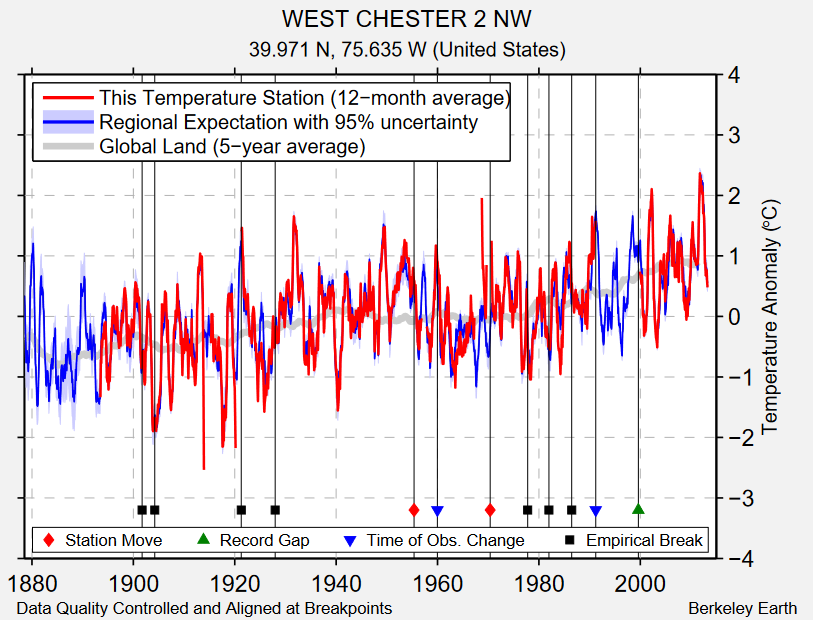
After 1970 the data doesn't need much adjustment. This is also the period of strongest warming. Coatesville, ENantmeal, and phl below. The "heat island" hasn't missed Chesco
Finally NOAA's long term temperature trend for Chesco, using all the local temperature measurements.
-
 3
3
-
 1
1
-
-
-
15 hours ago, NEOH said:
8/30 and 8/31 at Freya glacier in eastern Greenland roughly 3000'. The interesting weather continues next week with a big melt event to kick off the accumulation season.
-
 1
1
-
-
-
-
Per this study, AMOC collapse promotes La Nina.
https://phys.org/news/2022-06-huge-atlantic-ocean-current-downif.html
-
 3
3
-
-
Why are Atlantic hurricane seasons becoming more active? Per this study, its roughly a 50/50 split between more favorable weather patterns/ENSO etc. and a warming ocean.
https://wcd.copernicus.org/articles/3/471/2022/wcd-3-471-2022.html
-
On 4/23/2022 at 6:10 PM, Silver Meteor said:
No confirmation bias in this group, no sir. LOL
My bias is consensus science. What's yours?
-
 1
1
-
-
Good thread on what is needed for 1.5C. Top 15 solutions below. Nothing earthshaking. Mainly renewables, diet, and better stewardship of natural world.
-
On 3/27/2022 at 2:38 AM, LibertyBell said:
there is a real necessity to get nations like China and India onboard, China going back to coal is a real detriment not only because of the vast number of people that live there, but also because it also affects that entire region. They have a goal of net zero by 2060 I believe, but in the mean time they have been opening up more coal plants. Nuclear would be a really good option here, but in the current political climate, people seem to be even more wary of nuclear.
India's power generation mix. They are "onboard" with renewables, but growing too fast to reduce fossil fuel use. Note that use factor for fossil is much higher than renewables.
-
18 hours ago, Typhoon Tip said:
This is troubling ..
But it is also indirectly - I believe - related to the same aspects that have decoupled the ENSO states from the circulation modes during recent winters.
The energy observation is a different metric.. But that increasing is consistent with decoupling in the 'intuitive' sense - just probably needs the geophysical proof/mathematics
But the decoupling thing has been intriguing in its own rights. This season spent some 5 .. 6 weeks with only weakly identifiable La Nina circulation foot-print. This type of decoupling has taken place during both warm(cool) ENSO events, with increasing frequency, spanning the last 15 or so years.
Prior to the past few months, haven't noticed any de-coupling of global temperature from enso.
-
5 hours ago, csnavywx said:
Yikes at the new CERES data. +1.5W/m2 imbalance last year. +1.2 W/m2 trend gives about +0.9C of equilibrium warming, if my back of the envelope calculation is correct. We've already probably blown +2C and at this rate of emissions, I wouldn't be shocked to see a sizeable uptick in the rate of warming this decade.
Matches up with re-analysis data indicating a roughly 9-month warming period now, despite the nina. Wondering if this is recovery from the Australian fire aerosol. In any case, the next nino is going to find an atmosphere that can hold more heat than 2016.
-
 2
2
-
-
Made an attempt to check how the recent past has tracked the paper findings. Below is 2011-2021 against a 1981-2010 normal, i.e the last ten years vs the previous 30. The AMOC signal can be seen but the cooling center is SE of Greenland and S of Iceland and heights have tended to rise recently near Greenland. Also visible is broad global warming, and a nina signal in the Pacific. The nina signal is not surprising considering enso decade trends since 1980. Guess one message is be careful analyzing regional circulation trends.
-
9 hours ago, etudiant said:
I hope your happy vision comes about, but don't see how it can without much pain.
Wind and solar are intermittent, they need backup, which implies massive capacity(expensive) on standby, in addition to the green energy conversion costs.
Simultaneously, cutting Russian oil really squeezes global fuel production, implying shortages, which generate higher prices.
So the consumer gets hit with higher priced gas and more costly electricity during the transition, which can't be quick.
If nuclear were not such a swamp of massive delays and cost overruns, this could be its moment to shine, but the still available workforce that is qualified for these projects is small and mostly old, so not a plausible option.
There is going to be pain. That's the nature of fossil fuels, particularly oil. A commodity based on a resource that depletes. New field/wells are constantly needed to maintain current production. Now we are chasing oil sands, deep offshore, fracking etc. These are all expensive and need ongoing large investment just to maintain current production. Fracking is particularly problematic from a boom/bust standpoint, because individual wells deplete rapidly. Our current pain started in the pandemic when oil prices crashed, causing investment to slow. US oil production dropped giving OPEC more pricing power. At that point an oil shortage and price increase was inevitable. Putin is taking advantage of the commodity cycle just like Middle East oil barons did 50 years ago. Nothing new.
Too late to impact this crisis, but we could minimize the next. The resource base for renewables is larger than fossil fuels and more evenly distributed. Solar and wind are mass produced in automated factories. They can ramp quickly, doubling every 2-4 years recently. Renewables and EV have finally reached the scale where one or two more doublings will have a big impact in reducing fossil fuel demand. Yes, a transition will take time, money and innovation. Target the bad actors from a geopolitical, economic and climate standpoint first.
A transition is going to happen anyway, as renewable, EV +storage economics are outpacing fossil/combustion. Just a matter of whether its fast enough and targeted properly to minimize future geopolitical, economic, and/or climate pain.
-
 1
1
-
-
US gulf coast from Miss to Key West.
https://tamino.wordpress.com/2022/02/25/sea-level-rise-30-year-forecasts-from-noaa/
-
 1
1
-
-
-
Remember when that came out. Hard to believe it is still quoted, but I've learned to never underestimate confirmation bias.
-
 1
1
-
-
On 2/12/2022 at 3:46 PM, csnavywx said:
Yep, most of that additional heat will go into the oceanic flywheel for later. Just didn't expect that level of additional forcing so quickly. I expect we'll feel some of that on the next Nino, for instance.
There is a double whammy as aerosol emissions decrease in China and other developing countries, which also increases forcing. The good news: methane emission reductions would have a rapid impact due short lifetime. We should be using methane reductions to offset the forcing boost from reduced aerosols.

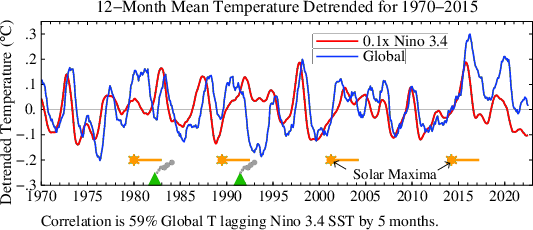


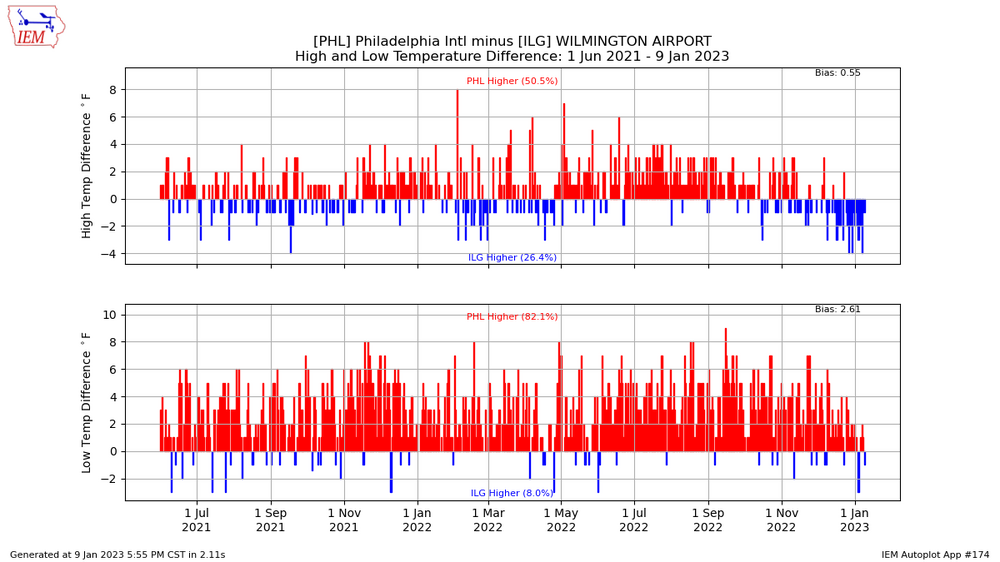
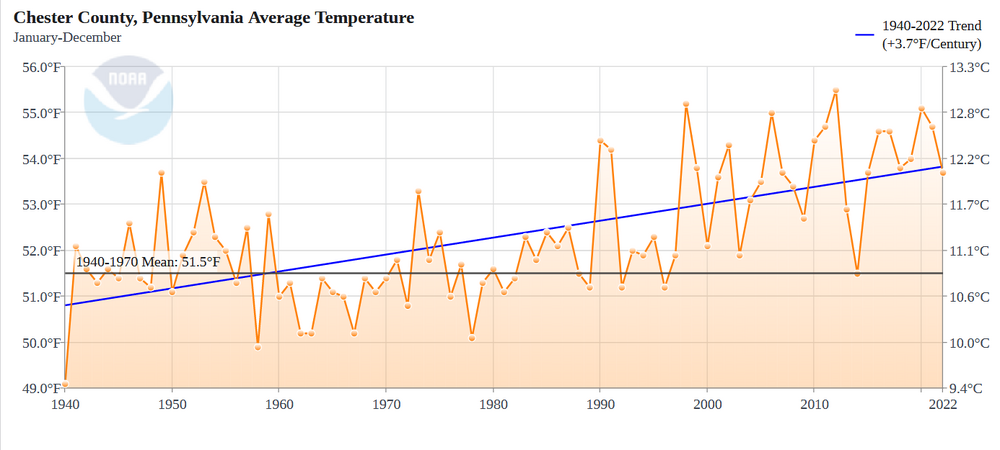
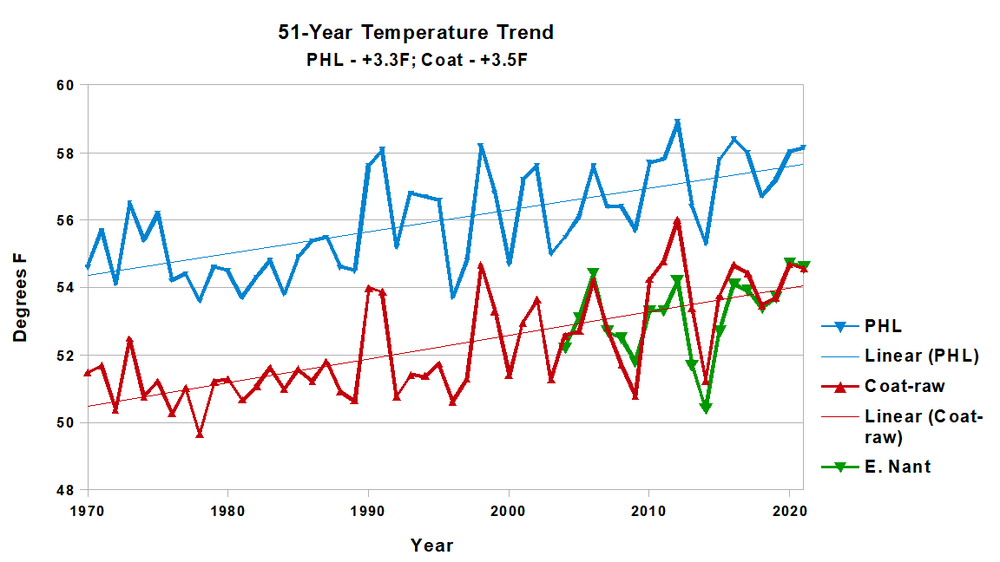
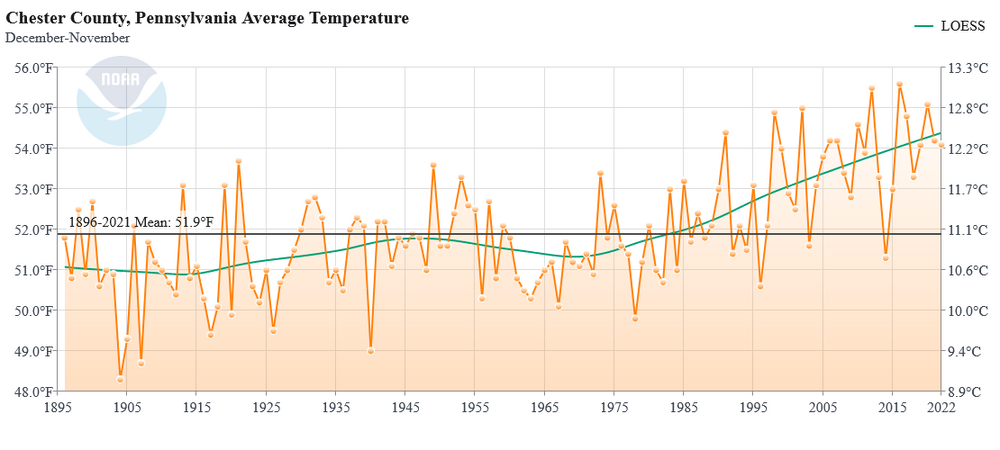
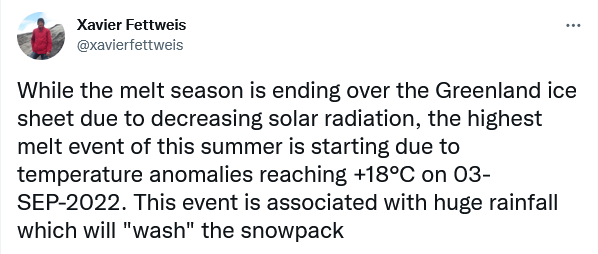

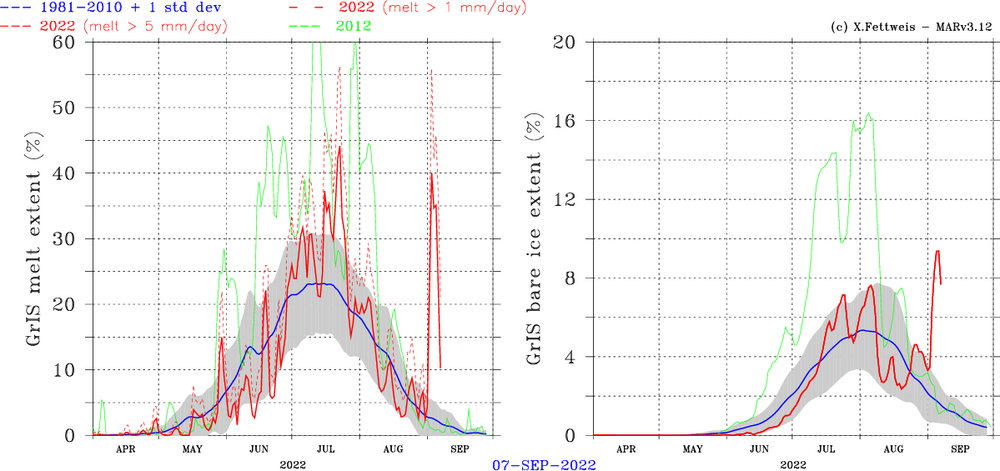
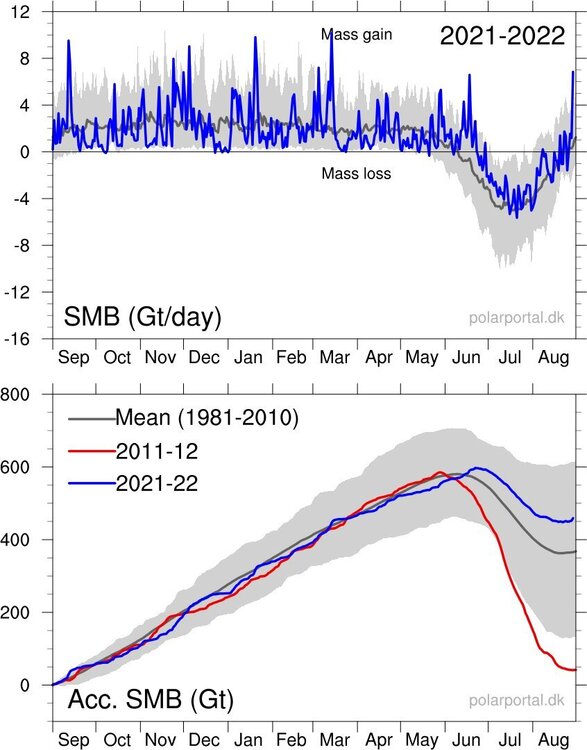
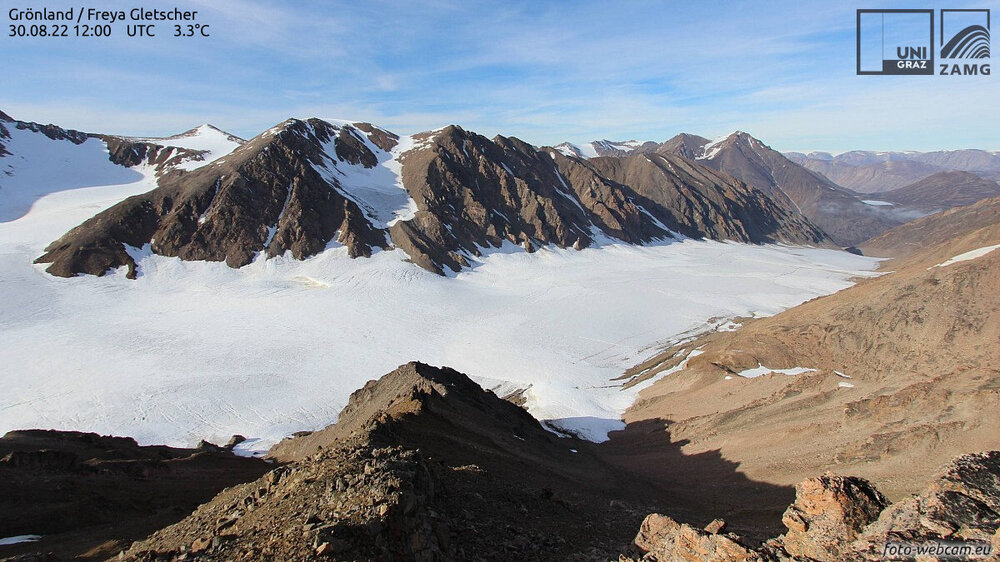
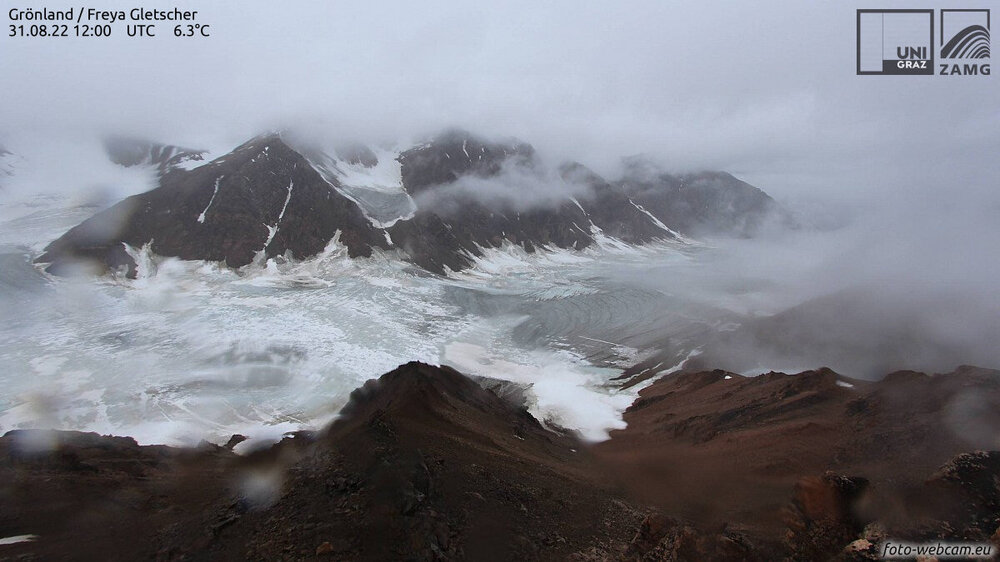
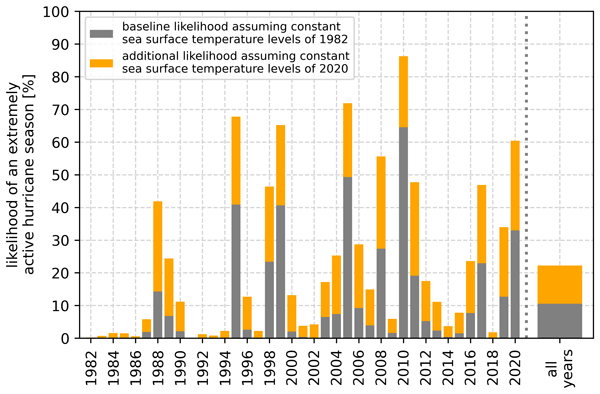
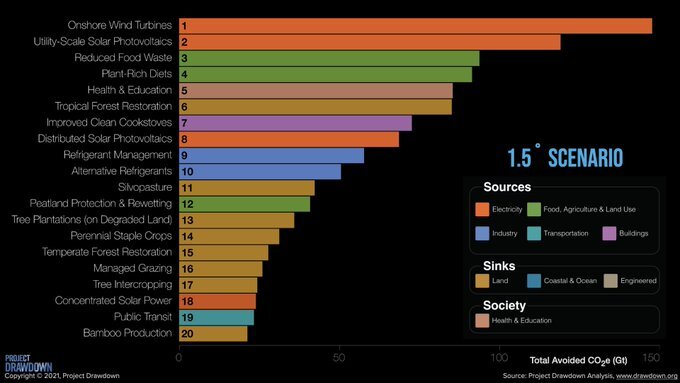
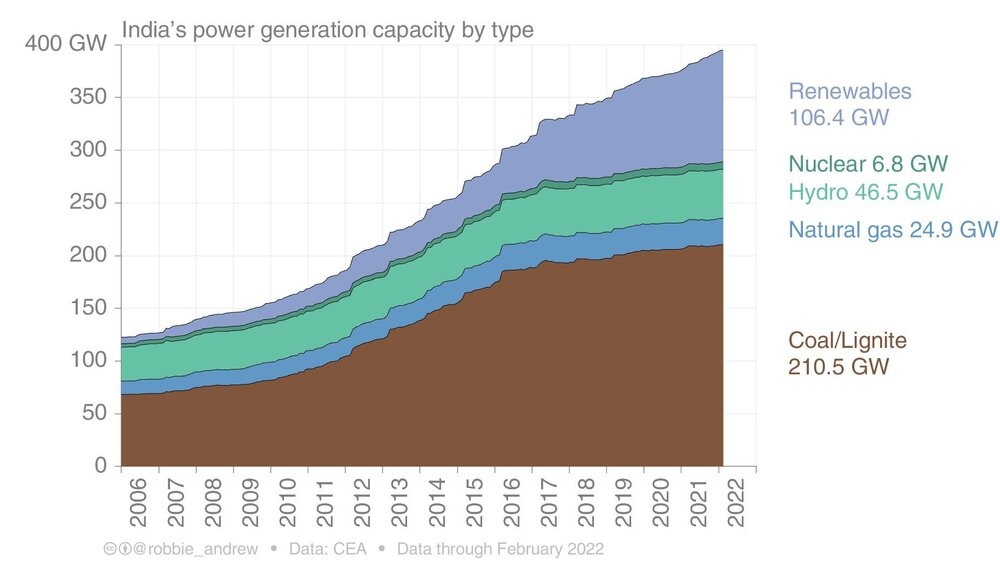
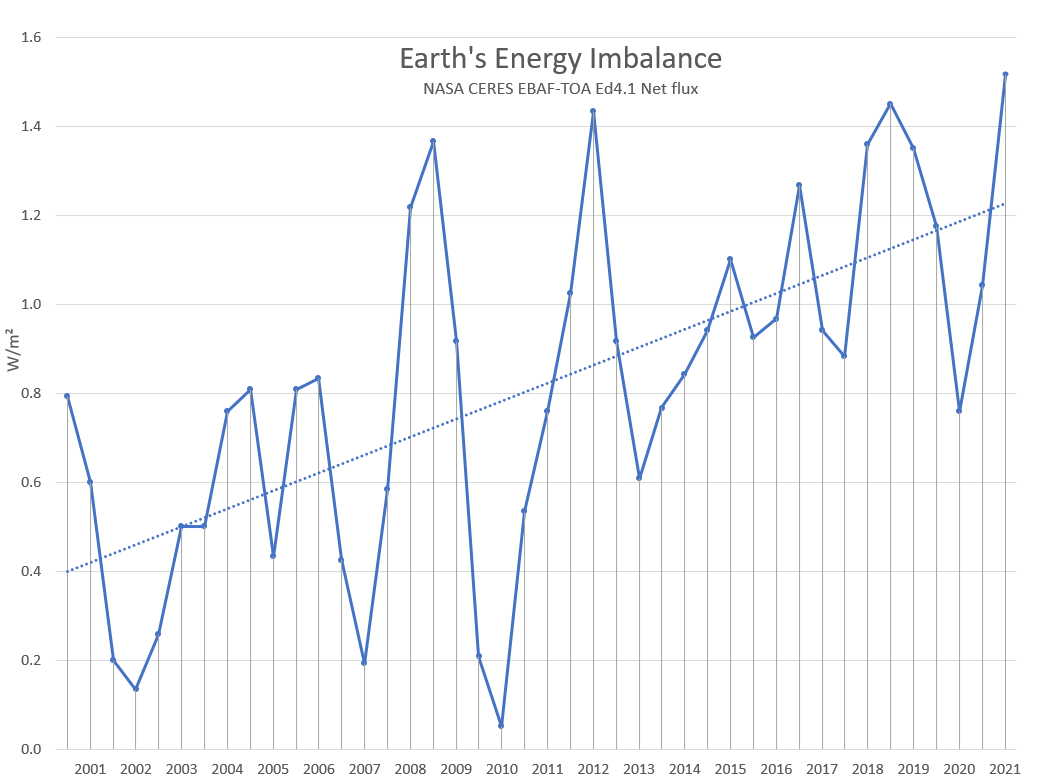
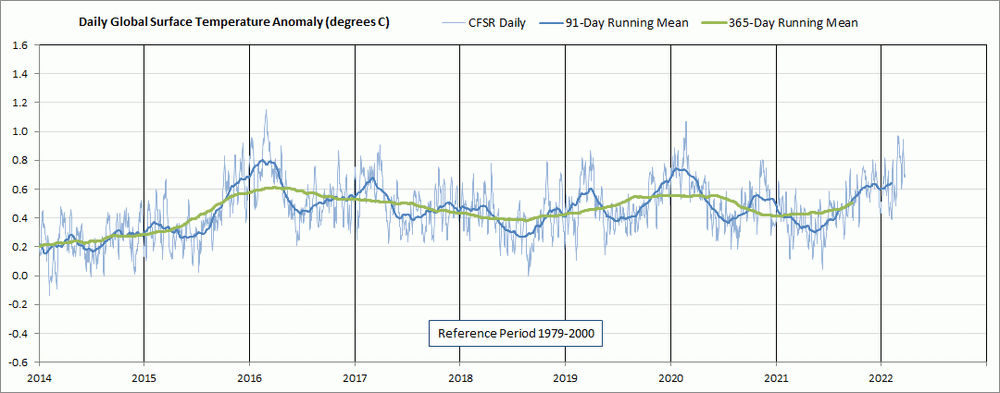
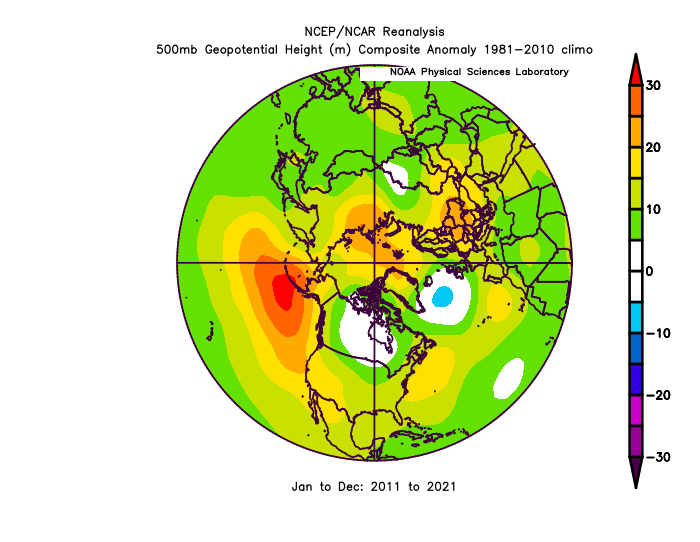
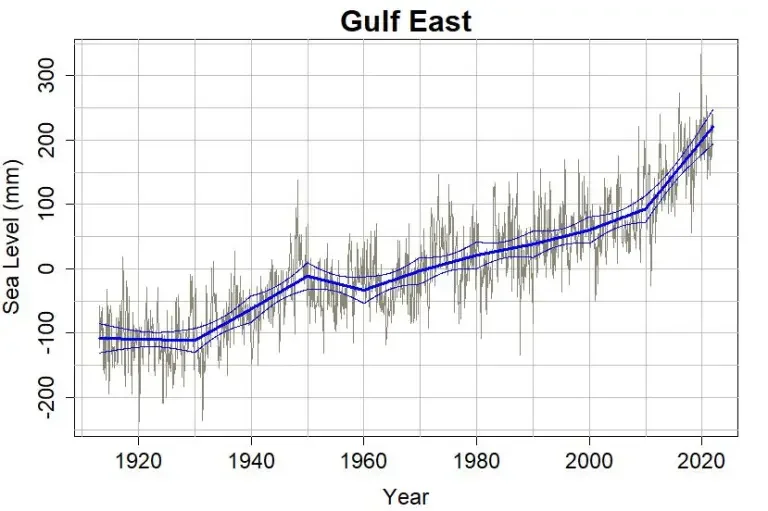
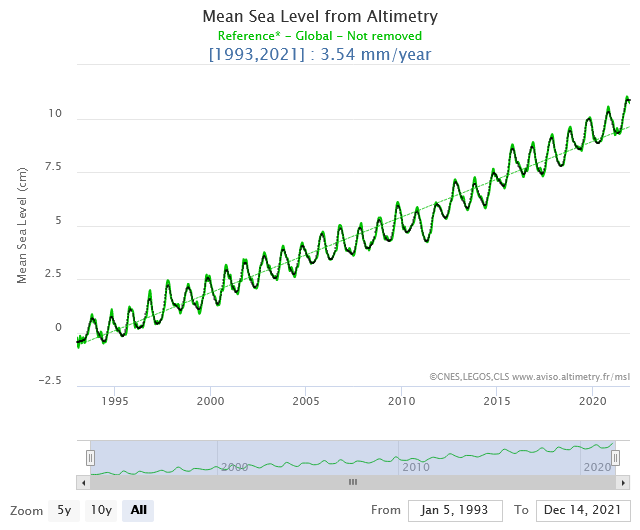
Occasional Thoughts on Climate Change
in Climate Change
Posted
Lets broaden out the analysis. Here is the philadelphia airport vs other Mt Holly long-term climate sites and the NOAA climate series for SE Pa. Yes Philadelphia was too warm last year. The problem started at the end of 2021 and ended late in 2022. Easy to see by comparing with nearby stations. Over the long-term though there is good agreement among the climate sites and with the NOAA regional record. phl is warming a bit faster and abe a bit slower, but good agreement overall.
What about the coop stations? Lets go back to the 1940s. The COOPs were using mercury max/min thermometers that were reset between 5 and 7 PM. This alone added roughly 1F of warming bias, vs the climate sites that were on a midnight-to-midnight basis. There may have been other differences between the climate sites and coop stations.
Secondly, The chart you posted shows poor agreement among the Chesco sites both year-to-year and over the long-term. As an example below is a chart I have handy comparing Glenmoore and Coatesville 2W. Both of these stations can't be right. Fortunately the NOAA bias adjustment can sort out the station updates and measurement problems. In the chart below Coatesville is good and Glenmoore way off. After adjustment the coops come into much better agreement and look like the other regional data.
Regarding "heat island" effects. You've been reading too much Tony Heller and other climate deniers. This isn't a rapidly growing area. The airport doesn't change much from year-to-year or even decade-to-decade. Certainly not enough to impact temperature measurements.